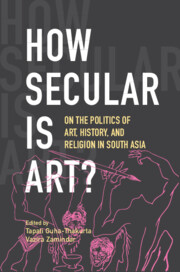5 - Displacements of Secularity: Decapitations and Their Histories
Published online by Cambridge University Press: 21 February 2023
Summary
Does decapitation become the emblem of social and historical division? Or rather the brutal admission of our internal fractures, of that intimate instability that prompts movements, but also crises?
—Julia Kristeva, The Severed HeadDisplacements
They say Sarmad was an Armenian Jew who travelled to India in the seventeenth century and became a mystic. That he came as an ordinary trader and by the banks of the Indus he fell in love with Abhay Chand, that he abandoned himself to nature and roamed the streets naked, that the great prince and philosopher Dara Shikoh invited him to the Mughal court at Delhi, and that Aurangzeb—in rivalry with his brother, or in abhorrence of the abandonment—had him beheaded for heresy.
He was ordered to recite the Kalima—‘there is no god but one God’—and yet only the words there is no god, there is no god came forth. And yet such were his mystical powers that when he was beheaded, he seized his own decapitated head and ascended the steps of the Jama Masjid, his head in his hands, and as he did so, behind him the river Jamna rose in wrath.
For the ecstatic and prolific painter-calligrapher-poet Sadequain, displaced from a small town in north India to West Pakistan in 1947, an intense identification with mystic-martyrs like Sarmad in this image of the beheaded artist painting himself (Image 5.1a)—an image that appears in various guises over and over again in his work—raises some of the aporias of modernity and writing about ‘art’ from the south: Has he been beheaded or has he beheaded himself? Do we grieve the violence of the beheading or is this violence the very condition of possibility, of his playfulness, of his sight? Are these passions or inventions of inheritance by which Sufi abandonment and transgression can enable an articulation of a ‘modern artist’? How does ‘secular’ function as guard and guardian of a domain called art, and as such organize the very terms by which we think of belief, dissent, and the sacred?
A Spiritual Crisis
The ‘crisis’ of Indian secularism and the acuteness with which it has been experienced in the domain of art have been put to considerable political and historical deliberation.
- Type
- Chapter
- Information
- How Secular Is Art?On the Politics of Art, History and Religion in South Asia, pp. 125 - 156Publisher: Cambridge University PressPrint publication year: 2024



